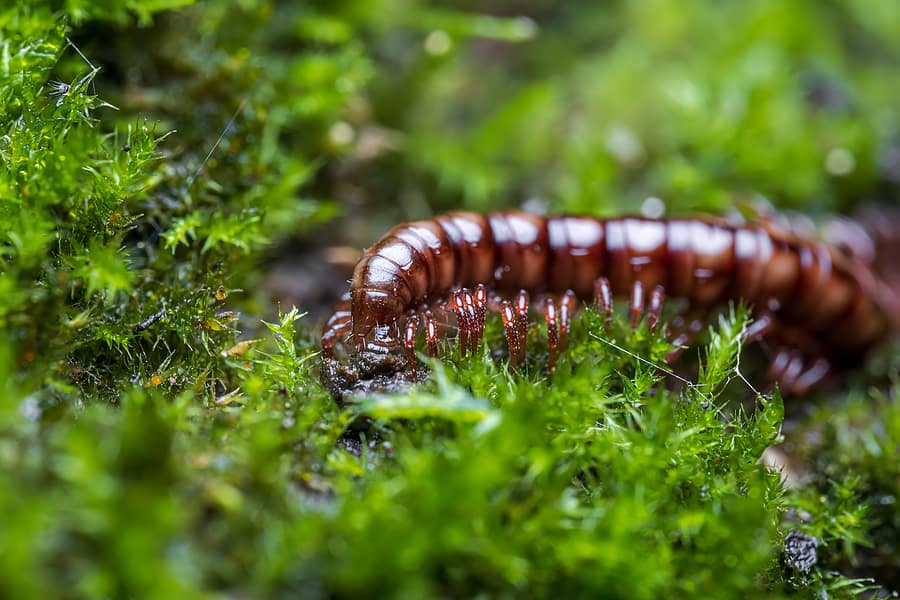READY TO GET STARTED?
REQUEST A FREE ESTIMATE
Fill out the form below or call (888) 466-7849 for a free, no-obligation estimate.

Centipedes are arthropods that will often make their way into your home. Although centipede means “100 legs,” not every centipede actually has that many. Most centipedes prefer dark, damp spaces and are commonly found outdoors under rocks, logs, or piles of leaves. Other species can be found in your home. Here are 5 of the most common type of centipedes you may come across in our area.
House centipedes are found throughout North America and even in Hawaii. They can grow to be 1-1/2″ long and have 15 pairs of legs. Their bodies are yellowish-gray in color with 3 stripes on their backs. They have long antennae. House centipedes are usually found in dark areas of your home, like the basement. They are usually harmless, but will bite you if they are handled. They are quite beneficial to have around as they will eat roaches, moths, termites, and other household pests.
The Eastern Red centipede is found across the East Coast. These centipedes grow to about 2-1/2″ long. Their bodies are red or orange in color with lighter orange legs. They like moisture and will burrow under wet leaves, logs, compost piles, and woodpiles. They are venomous with a very painful bite.
The Eastern Bark centipede can be found in the Eastern United States and Canada westward to the Rocky Mountains. They can grow up to 3″ long. These centipedes vary in color, ranging from solid orange-brown to dark brown. Some species also have an olive colored stripe on their back. Their heads are brownish-red and their antennae and legs are yellow. These centipedes are nocturnal and live under rocks and logs. They are venomous and will bite.
The diamondback soil centipede will grow up to 2″ in length. They have light brown bodies with dark brown diamonds on their backs. They are found throughout North America, typically in gardens rather than inside the home. They live under debris and will burrow into the soil. They don’t have eyes and don’t bite. They secrete a poisonous substance from the underside of their bodies in an attempt to ward off predators but they are not considered a threat to humans.
Brown centipedes originated in Europe (where they are quite common) but can now be found on the Eastern seaboard of the United States. They grow to about 1″ in length. They have brown bodies, long antennae, and long tails. They hunt at night and can often be found in dark areas of the home, such as the basement. They do have venomous fangs but they are so small that they do not pose any threat to humans. In fact, they are beneficial to have around because they eat other household pests.
Categories